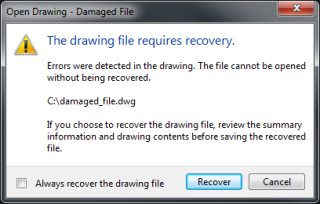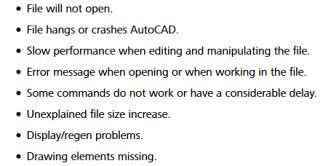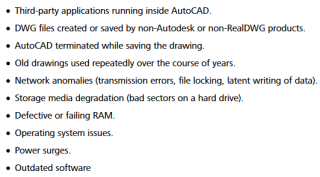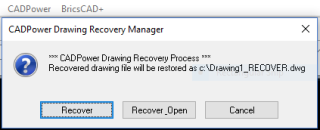How to Deal with Excess Baggage and Unwanted Weight: Bloated .dwg Files & Corrupted Databases
Bengaluru, India

Accept this reality! The longer you use a dwg file in your CAD software, it has a high chance of getting bloated in size or suffer from other kinds of problems & errors.
The problem with drawing files mysteriously increasing their size over time (or even suddenly) is common.
This is due to accumulation of unnecessary baggage (data) that is not useful for anyone.
If you read this knowledge base article, Autodesk lists the following possible causes and effects for a corrupted DWG:
Effects

Causes

It is interesting to note that the first two reasons that Autodesk cites for a possible corrupted DWG is external: third-party applications and non-Autodesk software (also known as ODA created dwg).
I would say the listing of the causes is not necessarily correct.
I have seen many failures and corrupt data created with regularity when using pure Autodesk software like Civil 3D, Inventor or Raster Design.
The newer the version, the more the chances of a corrupt data, and this is true for the guys on the other side of the fence as well: those that use ODA to read and write .dwg data.
This is a malady that plagues both AutoCAD & BricsCAD. Autodesk has a well-defined documentation of the same in this article, and a host of third party providers have developed utilities and fixes to help address (or at-least attempt to) these issues.
Talking about bloated files sizes in .dwg CAD language, it is called un-referenced symbols or phantom drawing data that is never used. For example, if you define blocks, layers, dimension/text styles, scale edit lists etc. that were once required but now no longer needed, it simply adds to the space occupied in the dwg.
You may have deleted a whole bunch of entities, but its “ghost” is still residing in the dwg file, and neither AutoCAD nor BricsCAD knows this must be deleted.
The result: slowed down performance in open, save, pan, zoom and similar operations.
The .dwg file format is a complex maze of symbol definitions, graphical and non-graphical data, dictionaries and pointers, and many more, all of which are linked to each other.
If this link is broken or disturbed, there is no way to know what is required and what is not.
Often, this happens unknowingly. For example, when you do editing by copy-paste as block, you add a new definition of the block each time.
You may erase the block but its definition stays in the drawing.
If you INSERT or XREF-BIND an external drawing, you unknowingly bring in a whole lot of information from that drawing which you probably never need. This adds to the size of your DWG.
The quick solution to this is very simple. Simply do a PURGE ALL 2 or 3 times to get rid of all the junk.
If you are using CADPower, you can simply use the PUA (or CP_PALL) command to do it.
An additional and potential problem working with drawings over a period of time is that the drawing database may get corrupted, in various degrees.
Sometimes, the corruption is minor and will just print some error messages during startup and no further damage.
But it is like cancer, it may (and potentially will) grow into bigger problems.
To overcome this, it is suggested that you run the AUDIT command periodically on your drawings to ensure that your drawings stay clear of database errors.
The Drawing Recovery Manager is another useful tool in AutoCAD that can be used to recover files that may be lying in some obscure Windows TEMP or application defined folder and waiting to be found and recovered.
BricsCAD lacks a good Drawing Recovery Manager and I have been highlighting the need for one repeatedly to the folks at Gent, Belgium.
It is on their to-do list and I hope to see this very soon in BricsCAD. On our part, we have made it somewhat convenient for BricsCAD users to have a recovery manager by building one inside CADPower.
The CP_RECOVERYMANAGER command already does its best to provide interim relief. It is a FREEWARE command in CADPower and nerver expires. It is there for everyone to use, today and now, without any charge.
Disaster will always happen, and how your software responds to it and helps recover is important, and the sign of a good customer support.
Like I have said before, even using AutoCAD corrupts its own DWG files every now and then.
That is why the AUDIT command is a creation of Autodesk itself, for use by AutoCAD users as well.
The implementation of AUDIT in AutoCAD and BricsCAD is similar but not necessarily the same.
Both the AUDIT implementations fix errors that they know about, and this could sometimes be different in each software.
The bottom-line is that both AutoCAD and BricsCAD users must make it a practice to use AUDIT regularly as part of maintaining the overall health of their DWG data.
If you face weird dwg behavior in BricsCAD (or AutoCAD), please remember to follow the above steps.
